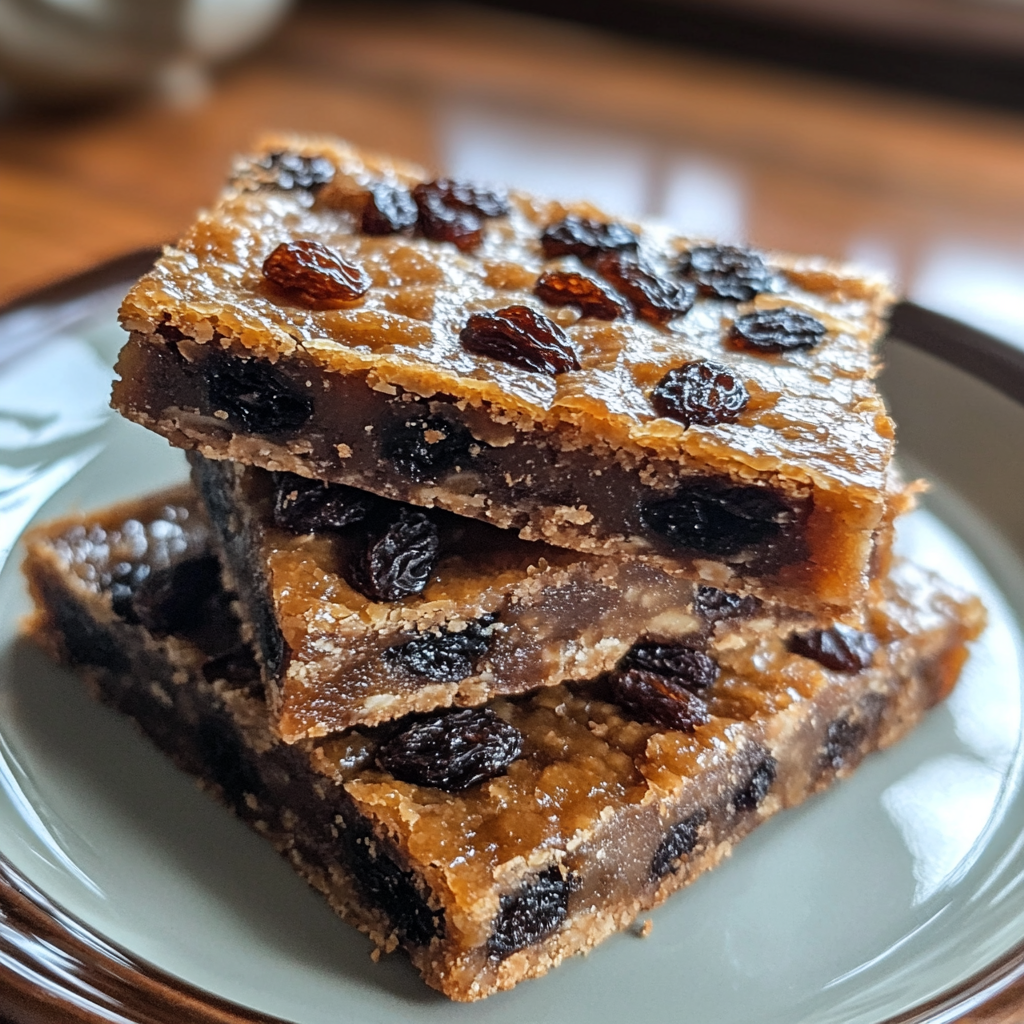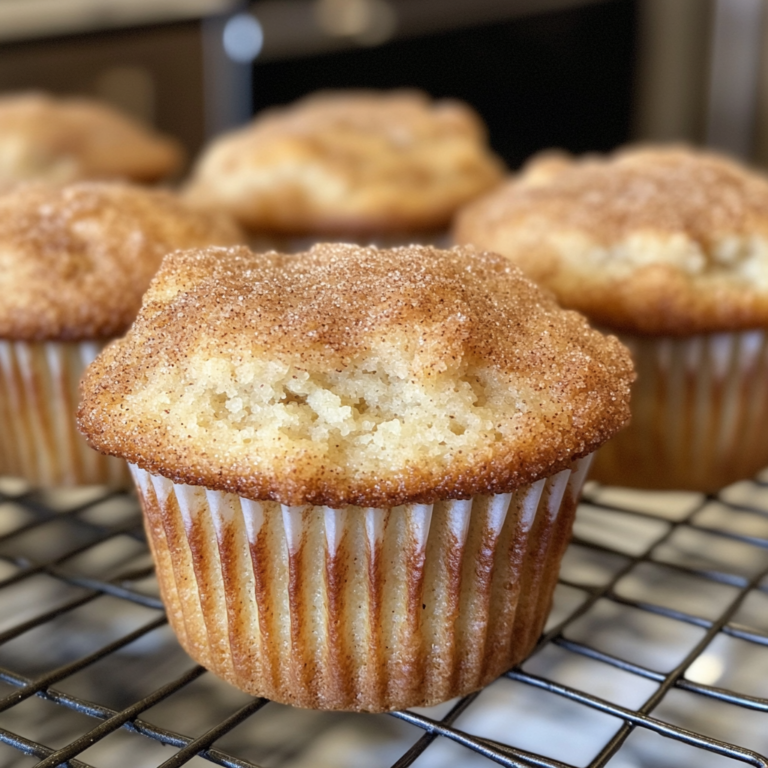Oatmeal Raisin Cookie Bars: A Delicious Twist on a Classic Treat
Oatmeal raisin cookie bars combine the comforting flavors of traditional oatmeal cookies with the convenience of a bar format. These treats are not only easy to make, but they also satisfy both sweet cravings and nutritional needs, thanks to the wholesome oats and raisins. This popular dessert is perfect for any occasion, whether as an after-school snack or a cozy treat for gatherings.
Baking oatmeal raisin cookie bars allows for creativity and customization. Chefs can add ingredients like nuts, chocolate chips, or even spices to enhance the flavor profile. The versatility of these bars makes them appealing to a wide audience, ensuring that there is something for everyone to enjoy.
Finding the right recipe can elevate this simple dessert to new heights. With a few straightforward ingredients and easy-to-follow steps, anyone can master this delicious treat. Whether someone is a seasoned baker or a novice in the kitchen, oatmeal raisin cookie bars offer a fun and rewarding baking experience that is sure to impress.
History of Oatmeal Raisin Cookie Bars
The history of oatmeal raisin cookie bars reveals its evolution from traditional cookie recipes. These bars have roots in various baking traditions, showcasing how ingredients and methods have changed over time.
Origins of the Recipe
The oatmeal raisin cookie is believed to have originated in the early 1900s. The combination of oats and raisins provided a nutritious twist on classic cookies. Recipes started appearing in American cookbooks, emphasizing the use of wholesome ingredients.
By the 1930s, the inclusion of oats became more popular, aligning with health trends of the time. The National Oatmeal Cookie Day was established to celebrate this treat, further solidifying its place in American baking culture. Oatmeal raisin cookie bars emerged as a convenient variation, offering similar flavors in a format that was easier to bake and serve.
Popularity Growth
The popularity of oatmeal raisin cookie bars grew significantly in the late 20th century. Home bakers and commercial brands began to recognize the appeal of these soft, chewy treats. Their widespread acceptance in cafes and bakeries contributed to their fame.
The health-conscious movement has also played a role in promoting oatmeal-based recipes. These bars were marketed as a healthier dessert option due to their fiber content. Additionally, the versatility of the recipe allowed for countless variations, appealing to a wide audience.
As such, oatmeal raisin cookie bars remain a beloved choice for many, balancing taste with nutritional benefits.
Nutritional Information
Oatmeal Raisin Cookie Bars offer a unique blend of ingredients that contribute to their nutritional profile. Understanding both the caloric content and the health benefits of these ingredients can help individuals make informed dietary choices.
Caloric Content
The caloric content of Oatmeal Raisin Cookie Bars typically varies based on the recipe and portion size. On average, a bar may contain around 150 to 200 calories per serving.
Key components contributing to the caloric value include:
- Oats: Provide complex carbohydrates and fiber.
- Raisins: Add natural sugars, contributing to the energy content.
- Butter or Oil: These fats can significantly increase calorie count.
For example, a recipe using 1 cup of oats and 1 cup of raisins can yield approximately 300-400 calories total, depending on the additional ingredients used.
Health Benefits of Ingredients
Oatmeal Raisin Cookie Bars contain several nutritious ingredients that offer health benefits.
Oats are rich in soluble fiber, which may help reduce cholesterol levels and improve heart health. They also provide sustained energy.
Raisins are packed with essential nutrients like iron, potassium, and antioxidants. They can promote digestive health and provide a quick source of natural energy.
Nuts (if included) enhance heart health due to their healthy fats and protein content.
This combination of ingredients not only satisfies the taste buds but also contributes to a balanced diet, making these bars a wholesome snack choice.
Key Ingredients
The flavor and texture of oatmeal raisin cookie bars depend heavily on the choice of ingredients. Key components include the types of oats used, the selection of raisins, and possible alternatives to standard ingredients that can enhance the final product.
Types of Oats Used
When selecting oats for oatmeal raisin cookie bars, the type of oats can affect the texture and taste significantly. Common options include:
- Rolled Oats: These are flattened and partially cooked, providing a chewy texture.
- Quick Oats: These are rolled thinner and cooked faster, leading to a softer, less chewy bar.
- Steel-Cut Oats: These remain in whole pieces and offer a hearty texture, but they require longer cooking times and are not typically used in cookie bars.
Rolled oats are the most popular choice for their balance of chewiness and ability to hold moisture. Quick oats can work, but they may alter the final texture. Steel-cut oats may be less suitable unless properly pre-cooked.

Choosing the Right Raisins
Raisins add sweetness and chewiness to oatmeal raisin cookie bars. There are several factors to consider when choosing raisins:
- Types of Raisins: The most common varieties include Thompson Seedless raisins, Golden raisins, and even flavored options like cinnamon-coated raisins.
- Freshness: Opt for plump, moist raisins. Stale or dry raisins can detract from the overall texture.
- Soaking: Some bakers prefer soaking raisins in hot water or alcohol to plump them before incorporating them into the batter.
Each type of raisin imparts a slightly different flavor, enriching the bars. Freshness and preparation affect not only taste but also how well they combine with the oats.
Alternatives for Traditional Ingredients
While traditional recipes use specific ingredients, there are several alternatives that can cater to dietary needs or personal preferences.
- Sweeteners: Instead of granulated sugar, options like honey, maple syrup, or coconut sugar can be used to create different flavors.
- Flours: Gluten-free alternatives such as almond flour or oat flour can replace all-purpose flour to accommodate dietary restrictions.
- Fats: Instead of butter, using coconut oil or apple sauce can reduce saturated fat while keeping a moist texture.
Experimenting with these ingredients allows for customization without sacrificing flavor or texture. Each alternative offers a unique twist on the classic recipe, making it adaptable.
Baking Equipment Essentials
The right equipment makes a significant difference in baking oatmeal raisin cookie bars. Selecting appropriate mixing tools and baking trays is crucial for achieving the desired texture and flavor.
Mixing Tools
When preparing oatmeal raisin cookie bars, essential mixing tools include a sturdy mixing bowl and a reliable whisk or electric mixer. A large mixing bowl allows for combining the ingredients without spills.
An electric mixer can save time and effort when creaming butter and sugar. For folding in ingredients such as oats and raisins, a rubber spatula works best. This tool ensures everything is fully incorporated without overmixing. Measuring cups and spoons ensure precise ingredient amounts, directly impacting the final product’s consistency and taste.
Baking Trays and Liners
Choosing the right baking tray is important for even cooking. A light-colored, non-stick baking sheet retains heat well and facilitates a golden-brown exterior.
Parchment paper is recommended for lining the tray. It prevents sticking and simplifies cleanup. Some bakers prefer silicone baking mats for their easy removal and reusable nature.
For best results, use a 9×13-inch baking pan for these bars. This size allows for optimum thickness and baking time. Always check for doneness using a toothpick, ensuring the bars are thoroughly baked without being dry.
Preparing the Batter
Creating a well-blended batter is crucial for achieving the perfect oatmeal raisin cookie bars. Mixing techniques and achieving the right consistency play significant roles in the final texture and flavor of the bars.
Mixing Techniques
Start by creaming together the butter and sugars until the mixture is light and fluffy. This step incorporates air, which helps the bars rise. A stand mixer or hand mixer works best for this process.
Next, add in eggs one at a time, ensuring each is fully incorporated before adding the next. Following the eggs, mix in the vanilla extract.
In a separate bowl, combine the dry ingredients: oats, flour, baking soda, cinnamon, and salt. Gradually incorporate this mixture into the wet ingredients to prevent clumping. Stir gently until just combined. Avoid overmixing, as it can lead to tough bars.
Consistency and Texture Tips
Achieving the right batter consistency is essential. The batter should be thick but spreadable. If it feels too dry, a tablespoon of milk can help moisten it without making it runny.
For optimal texture, using rolled oats rather than quick oats can add chewiness. Ensure that the raisins are plump; soaking them in warm water for a few minutes can enhance their moisture.
When the batter is ready, place it in a greased baking pan. Spreading evenly will help ensure uniform baking. The final texture should be a balance of chewy and soft, making each bite enjoyable.
Baking Process
Successfully baking oatmeal raisin cookie bars requires attention to temperature, positioning, and timing. Each factor plays a crucial role in achieving the desired texture and flavor.
Oven Temperature and Positioning
Preheat the oven to 350°F (175°C). This temperature provides the ideal heat for baking cookie bars, allowing them to cook evenly.
Position the baking pan in the center of the oven. This ensures that hot air circulates freely around the bars, leading to consistent cooking. For those using a convection oven, the temperature may need to be adjusted down by about 25°F (15°C), as convection ovens circulate hot air more effectively.
Using an oven thermometer can help verify that the temperature is accurate. A precise temperature prevents undercooking or overcooking, which affects texture.
Timing for Perfect Chewiness
Bake the oatmeal raisin cookie bars for 20 to 25 minutes. Checking for doneness should be done through visual and tactile cues.
The edges should appear golden brown while the center remains slightly soft. For chewiness, it’s critical not to overbake; they will continue to cook in the pan after being removed from the oven.
Using a toothpick can help determine doneness; it should come out with a few moist crumbs but not wet batter. The bars will set as they cool, achieving the perfect chewy consistency.
Decoration and Presentation
Presentation plays a key role in elevating oatmeal raisin cookie bars from a simple treat to a delicious centerpiece. By considering icing and topping options, as well as suggesting serving styles, one can enhance the visual and sensory appeal of these bars.

Icing and Topping Options
There are several ways to elevate the appearance and taste of oatmeal raisin cookie bars. A cream cheese frosting can add a rich, tangy flavor that complements the sweetness of the bars.
Alternative toppings include:
- Chocolate Drizzle: Melted chocolate poured over the bars adds elegance.
- Nuts: Chopped walnuts or pecans can provide crunch and visual texture.
- Coconut Flakes: Unsweetened coconut offers a pleasant chewiness.
For a simpler decoration, a dusting of powdered sugar can enhance appearance without overpowering the cookie flavor. Additionally, incorporating a mix of icing and toppings allows for customization that can cater to different preferences.
Serving Suggestions
When serving oatmeal raisin cookie bars, presentation can significantly enhance the experience. Cutting the bars into uniform squares or rectangles is visually appealing and makes serving easy.
Placing them on a decorative platter adds an inviting touch. Consider using parchment paper for lining the platter to prevent sticking and to add a rustic look.
Additional serving ideas:
- Pair the bars with a scoop of vanilla ice cream for a dessert twist.
- Serve alongside a rich coffee or tea to complement the flavors.
Adding a few whole raisins or cookies around the edges can create a cohesive look and attract attention.
Storage and Freshness
Proper storage is crucial to maintaining the freshness and flavor of oatmeal raisin cookie bars. Understanding the methods for both short-term and long-term storage will help keep these treats enjoyable for longer periods.
Short-Term Storage Tips
For short-term storage, oatmeal raisin cookie bars should be kept in an airtight container. This helps to maintain moisture and prevent them from becoming dry.
- Room Temperature: Store the bars at room temperature for up to a week, ensuring they are placed in a cool, dry area.
- Refrigeration: If the environment is particularly warm, refrigeration can extend freshness by a few extra days.
To prevent sticking, consider placing parchment paper between layers. Always check for signs of spoilage before consumption, such as an off smell or visible mold.
Long-Term Freezing Techniques
For longer storage needs, freezing is the best option. This method preserves the flavor and texture of oatmeal raisin cookie bars effectively.
- Cooling: Allow the bars to cool completely before freezing to prevent condensation.
- Wrapping: Wrap each bar tightly in plastic wrap, followed by aluminum foil. This double wrapping protects against freezer burn.
- Storage: Place the wrapped bars in an airtight container or freezer bag, labeling them with the date.
When ready to enjoy, thaw the bars in the refrigerator or at room temperature. This method can keep them fresh for up to three months.
Adapting the Recipe for Dietary Restrictions
Making oatmeal raisin cookie bars accessible for different dietary needs is straightforward. With a few adjustments, anyone can enjoy these treats without compromising taste or texture. Below are specific modifications for gluten-free and vegan diets.
Gluten-Free Modifications
To create gluten-free oatmeal raisin cookie bars, start by substituting traditional wheat flour with a gluten-free blend. Many blends contain a mix of rice flour, almond flour, and tapioca flour, which works well in this recipe.
- Oats: Ensure they are labeled gluten-free to avoid cross-contamination.
- Binders: Add 1/4 teaspoon xanthan gum to help mimic the elasticity that gluten provides.
These changes maintain the structure and flavor of the bars, ensuring they remain chewy and delicious.
Vegan Variations
For vegan oatmeal raisin cookie bars, replace eggs with a suitable alternative. Options include:
- Flaxseed Meal: Combine 1 tablespoon flaxseed meal with 2.5 tablespoons water. Let it sit for a few minutes to thicken.
- Applesauce: Use 1/4 cup applesauce as a binding ingredient.
In place of butter, use coconut oil or vegan butter for a similar richness. Sweeteners like maple syrup can enhance flavor while contributing moisture.
Pairings and Occasions
Oatmeal raisin cookie bars are versatile treats that can complement various beverages and fit seamlessly into different events. Choosing the right pairings and themed decorations enhances the overall experience.
Beverage Combinations
When selecting beverages to accompany oatmeal raisin cookie bars, consider options that balance the sweetness and texture of the bars. Popular choices include:
- Coffee: A robust cup of black coffee or a latte enhances the flavors of the cookie bar.
- Tea: Herbal teas like chamomile or chai provide a fragrant contrast.
- Milk: Cold or warm milk complements the chewy texture, making for a classic pairing.
For a festive touch, one could opt for spiced cider in fall or a refreshing iced tea in summer. These combinations elevate the enjoyment of the cookie bars during various occasions.
Event-Themed Decorating Ideas
Decorating for events featuring oatmeal raisin cookie bars can create a welcoming atmosphere. Here are some ideas:
- Birthday Parties: Use colorful plates and napkins, and consider a cookie bar display with different toppings like chocolate chips or nuts.
- Holiday Gatherings: Decorate with seasonal elements, like autumn leaves or snowflakes, depending on the holiday. Layer cookie bars in glass jars for an appealing presentation.
- Casual Gatherings: Simple table settings with rustic elements like burlap or wooden serving boards can enhance the homemade feel of the cookie bars.
These themed decorations help set the mood and make the treats visually appealing for guests.







